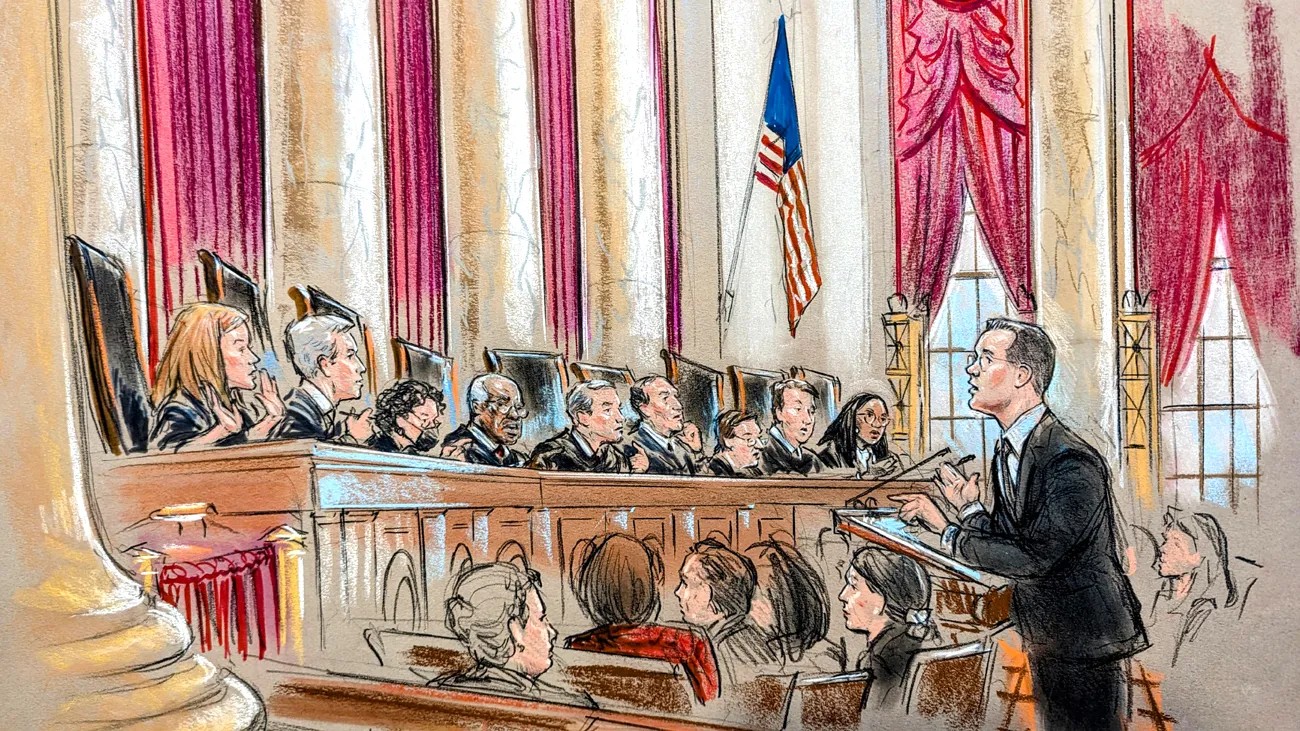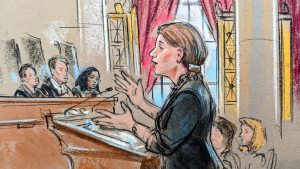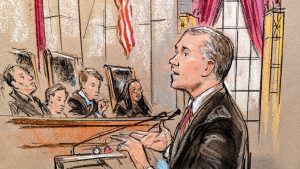ARGUMENT ANALYSIS
No clear path on how court will rule after oral arguments in two immigration cases Monday

on Apr 20, 2023 at 9:41 am

During oral argument on Monday in Pugin v. Garland and Garland v. Cordero-Garcia, the justices sought to define the contours of an “offense relating to the obstruction of justice,” which is one among the prior convictions that subjects noncitizens to mandatory removal from the United States as an “aggravated felony.” The court agreed to hear the case to decide whether a conviction qualifies as such an offense only if it has a connection to an already-pending investigation or proceeding. The argument on Monday did not provide a clear path forward. As Justice Clarence Thomas remarked, “[i]t’s like we’re navigating between Scylla and Charybdis, and no one is giving us a way to get between the two extremes.”
Deputy Solicitor General Curtis Gannon argued for the government that the offense did not require a nexus to a pending investigation or proceeding. An obstruction of justice offense, he said, includes any crime requiring that the accused have the specific intent to willfully interfere with the process of justice and law. Gannon reasoned that “[t]he wheels of justice can be obstructed even before they begin to move [and] one of the best ways to obstruct an investigation or proceeding is to ensure that it never starts.” Gannon categorized obstruction of justice as a family of offenses bound by the element of intent to willfully interfere with justice. He pointed to statutes that do not require a pending proceeding and claimed they were understood by courts to qualify as obstruction when Congress added the offense to the list of aggravated felonies.
Several justices expressed concerns over Gannon’s expansive definition and his tools of analysis. For example, Justice Ketanji Brown Jackson appeared perplexed that Gannon did not limit the category to offenses listed in Chapter 73 of the U.S. Code, entitled Obstruction of Justice. Gannon responded that obstruction of justice swept more broadly than Chapter 73, particularly to include accessory-after-the-fact offenses like the one committed by Jean Francois Pugin.
Chief Justice John Roberts queried whether Gannon’s expansive definition of the offense would be difficult to contain in light of the modifier “relating to,” so that any offense with a relationship to obstruction of justice would qualify. Gannon responded that while the modifier may permit a broader reading, the requirement that the defendant have the intent to commit the crime sufficiently limits the breadth of offenses. Justice Elena Kagan observed that instead of focusing on the core of obstruction of justice, Gannon pushed into the outer bounds of a possible offense. Justice Neil Gorsuch agreed.
Justices Sonia Sotomayor and Amy Coney Barrett took issue with Gannon’s reliance on a dictionary definition of obstruction of justice. Sotomayor noted that the traditional approach to statutory analysis is to review the historical and jurisprudential meaning of the term. She pointed to the history and jurisprudence of Section 1503, which Pugin and Fernando Cordero-Garcia noted in their briefs as the prototypical obstruction of justice offense. Today’s Section 1503 was first codified in 1832 as the generic federal obstruction of justice offense. Sotomayor asserted that contemporaneous legal scholars maintained that the offense required a pending proceeding. She further referenced the main cases on which Pugin and Cordero-Garcia relied that concluded first in the 1800s and then in 1995, a year before Congress made obstruction of justice an aggravated felony, that Section 1503 required interference with a pending proceeding.
Martha Hutton, representing Pugin, argued for the narrowest definition in her brief, requiring a nexus to a pending judicial proceeding. However, she seemed to retreat from her position in responses to questions from Thomas and Justice Samuel Alito. Eventually she suggested that should the court decide that an investigation need not be pending for an obstruction of justice offense, it should limit the offense to circumstances where an individual foresees a particular investigation and acts with an intent to interfere with that specific investigation. Hutton explained that this particularity requirement “would exclude this general idea that anytime anyone does something that might … lever the possibility of prosecution a little bit,” it is obstruction of justice. In response to Jackson’s questioning, Hutton agreed that if the court viewed obstruction as a family of offenses, Chapter 73 might be a rational place to start but maintained that Section 1503 was the archetype for the offense. Hutton emphasized that under either the reasonably foreseeable particularized investigation or the Chapter 73 family of offenses approach, Pugin’s conviction of accessory-after-the-fact would not meet the definition.
Mark Fleming, arguing for Cordero-Garcia, stayed close to his brief, defining obstruction of justice as an affirmative and intentional attempt motivated by specific intent to interfere with an ongoing or pending investigation or proceeding. He drew a bright line by stating that an extant (not a foreseeable) investigation or proceeding is required. Justice Brett Kavanaugh pushed back, invoking the government’s contention that the best way to obstruct an investigation is to ensure that it never begins, alluding to witness tampering which is the offense for which Cordero-Garcia was convicted. Fleming responded that the moment before a pending investigation is categorically different because the individual “hasn’t made the determination to throw sand in the gears.” While Alito recognized the viability of concerns regarding the breadth of obstruction of justice, he asserted that Fleming’s definition still suffered from workability problems. Fleming responded that it is easy to assess whether an investigation or proceeding is pending, providing as examples a police case being opened or a grand jury proceeding commencing. Jackson again asked whether defining obstruction via Chapter 73 might provide the best approach, and Fleming quickly noted that Cordero-Garcia’s conviction did not match the offenses within the chapter.
At the conclusion of argument, the justices may still have found themselves adrift with Sotomayor, Gorsuch, Roberts, and possibly Barrett troubled over the breadth of the government’s definition; Kavanaugh and Alito unsettled over the conduct that might escape a definition that ties obstruction of justice to a pending investigation; and Jackson focused on Chapter 73 as definitional of offenses that relate to obstruction of justice. It is unclear how they will ultimately chart their course.




